
Puerto Baquerizo Moreno: Gateway to the Galápagos Islands
Discover Puerto Baquerizo Moreno, the vibrant gateway to the Galápagos Islands, where diverse wildlife, stunning landscapes, and rich history await your exploration.
Puerto Baquerizo Moreno is a charming coastal town located on San Cristóbal Island, one of the renowned Galápagos Islands in Ecuador. This town serves as the capital of the Galápagos Province, and is a hub for travelers eager to explore the incredible biodiversity and unique landscapes of the archipelago. The town itself exudes a laid-back atmosphere, with its waterfront promenade lined with cafes, restaurants, and shops. Puerto Baquerizo Moreno is home to several key attractions, including the Interpretation Center, which provides insightful exhibits about the natural and human history of the Galápagos. Just a short hike away, visitors can reach Frigatebird Hill, offering panoramic views of the coastline and the town. Nature enthusiasts will find plenty to do, from snorkeling in the crystal-clear waters of Tijeretas Bay to observing the diverse marine life at La Lobería Beach. The nearby El Junco Lagoon, a freshwater lake, offers a tranquil spot for birdwatching and hiking. Sea lions, marine iguanas, and a variety of bird species are commonly seen, making this a paradise for wildlife photographers. Puerto Baquerizo Moreno is also the starting point for many guided tours and boat trips that take visitors to other islands in the Galápagos. These excursions can include visits to places like Kicker Rock, a popular diving and snorkeling site known for its dramatic rock formations and rich marine life. With its combination of natural beauty and vibrant local culture, Puerto Baquerizo Moreno is an essential stop on any trip to the Galápagos.
Local tips in Puerto Baquerizo Moreno
- Visit the Interpretation Center early in your trip to gain a deeper understanding of the Galápagos Islands.
- Bring sturdy walking shoes for hiking and exploring the natural trails around the town.
- Snorkeling gear is a must to fully appreciate the underwater life at sites like Tijeretas Bay and Kicker Rock.
- Carry cash, as some local shops and restaurants may not accept credit cards.
- Respect the local wildlife; always maintain a safe distance and avoid feeding or disturbing the animals.
Puerto Baquerizo Moreno: Gateway to the Galápagos Islands
Puerto Baquerizo Moreno is a charming coastal town located on San Cristóbal Island, one of the renowned Galápagos Islands in Ecuador. This town serves as the capital of the Galápagos Province, and is a hub for travelers eager to explore the incredible biodiversity and unique landscapes of the archipelago. The town itself exudes a laid-back atmosphere, with its waterfront promenade lined with cafes, restaurants, and shops. Puerto Baquerizo Moreno is home to several key attractions, including the Interpretation Center, which provides insightful exhibits about the natural and human history of the Galápagos. Just a short hike away, visitors can reach Frigatebird Hill, offering panoramic views of the coastline and the town. Nature enthusiasts will find plenty to do, from snorkeling in the crystal-clear waters of Tijeretas Bay to observing the diverse marine life at La Lobería Beach. The nearby El Junco Lagoon, a freshwater lake, offers a tranquil spot for birdwatching and hiking. Sea lions, marine iguanas, and a variety of bird species are commonly seen, making this a paradise for wildlife photographers. Puerto Baquerizo Moreno is also the starting point for many guided tours and boat trips that take visitors to other islands in the Galápagos. These excursions can include visits to places like Kicker Rock, a popular diving and snorkeling site known for its dramatic rock formations and rich marine life. With its combination of natural beauty and vibrant local culture, Puerto Baquerizo Moreno is an essential stop on any trip to the Galápagos.
When is the best time to go to Puerto Baquerizo Moreno?
Iconic landmarks you can’t miss
Mirador Cerro Tijeretas
Experience stunning views of the Galápagos at Mirador Cerro Tijeretas, where nature meets breathtaking panoramas.
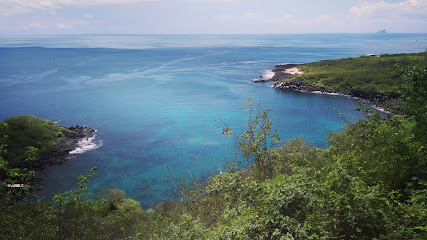
Malecón San Cristobal
Explore Malecón San Cristobal, a picturesque waterfront park in the Galápagos, where stunning ocean views and local culture come together in harmony.
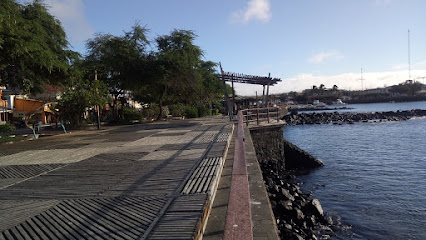
Playa Lobería
Explore the serene beauty of Playa Lobería, a coastal paradise in the Galápagos Islands, perfect for relaxation and marine adventures.
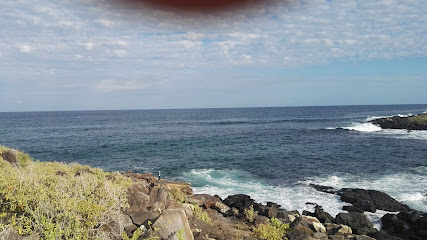
El Descanso Marinero
Experience the freshest seafood and breathtaking views at El Descanso Marinero in Puerto Baquerizo Moreno, a culinary gem in the Galápagos Islands.
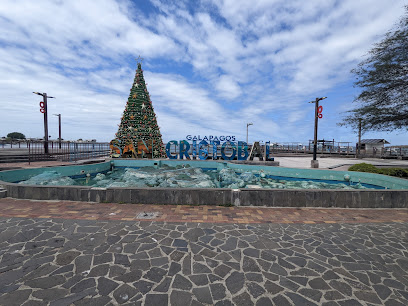
Giuseppe's
Experience authentic Italian cuisine at Giuseppe's in Puerto Baquerizo Moreno, where exquisite flavors meet a vibrant atmosphere.
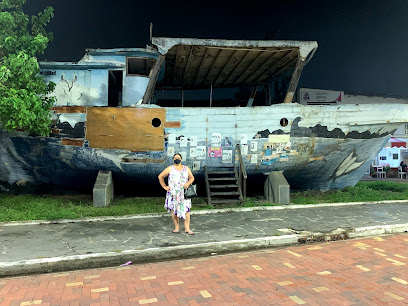
Cri's Burgers
Discover the delicious taste of Cri's Burgers in Puerto Baquerizo Moreno, where juicy flavors meet breathtaking ocean views.
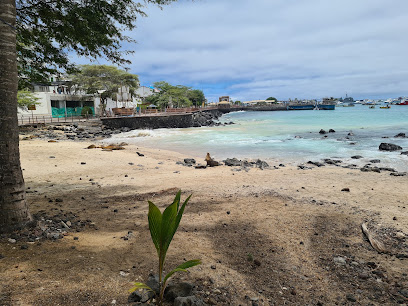
San Cristóbal Gianni Arismendy Environmental Interpretation Center
Unveil the secrets of the Galápagos Islands at the San Cristóbal Gianni Arismendy Environmental Interpretation Center, a hub of conservation and education.
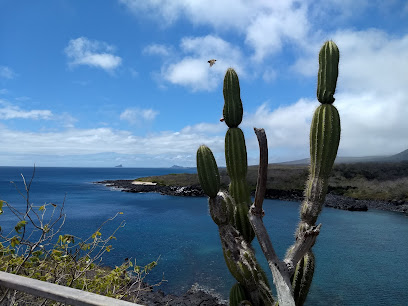
Midori Sushi Pub
Experience a unique blend of traditional Japanese cuisine and local flavors at Midori Sushi Pub in Puerto Baquerizo Moreno.
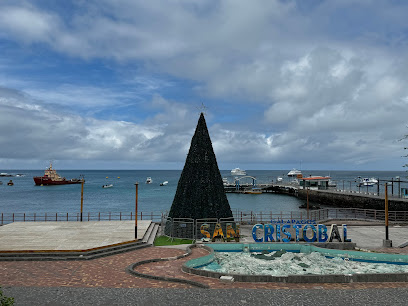
Treehouse
Discover the charm of Treehouse Cafe in San Cristóbal, where local flavors meet a cozy atmosphere perfect for relaxation and socializing.
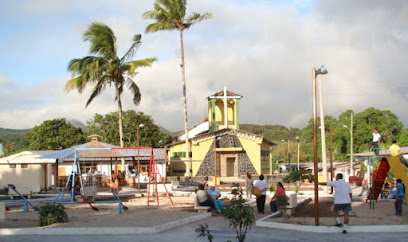
Muyu Galápagos
Discover the authentic flavors of Ecuador at Muyu Galápagos, a culinary haven in Puerto Baquerizo Moreno, where local ingredients meet island charm.
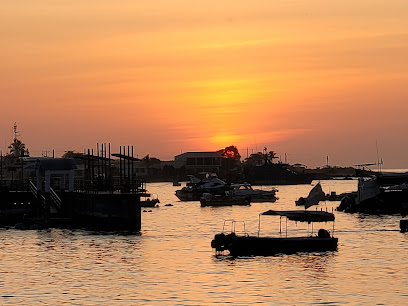
Muelle Tijeretas
Discover the serene beauty of Muelle Tijeretas, a stunning beach in Portoviejo, where tranquility meets breathtaking landscapes.
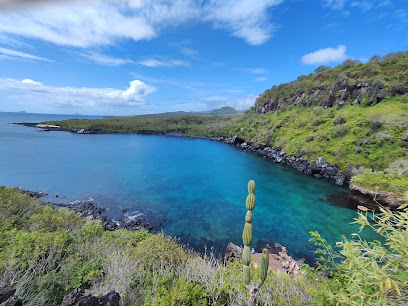
Arena Blanca
Discover the charm of Arena Blanca, a premier hotel in Puerto Baquerizo Moreno, offering comfort amidst the stunning natural beauty of the Galapagos Islands.

Hotel los Algarrobos
Experience the tranquility of Hotel los Algarrobos, your gateway to the breathtaking beauty of the Galápagos Islands in Puerto Baquerizo Moreno.

Wreck Bay Diving Center
Explore the vibrant underwater world of the Galápagos Islands at Wreck Bay Diving Center, your premier dive shop in Puerto Baquerizo Moreno.
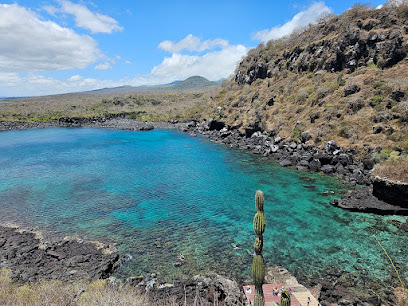
Casa Playa Mann
Discover the charm of Casa Playa Mann, a serene hotel in Puerto Baquerizo Moreno, perfect for exploring the stunning Galápagos Islands.
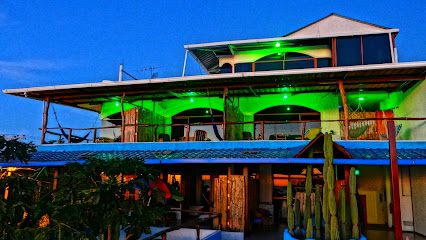
Unmissable attractions to see
Parque Nacional Galápagos
Discover the unparalleled beauty and unique wildlife of Parque Nacional Galápagos, a UNESCO World Heritage Site and a paradise for nature lovers.
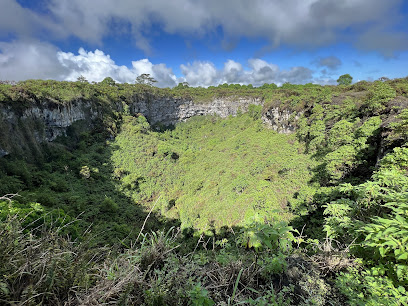
Playa Mann
Experience the tranquil beauty of Playa Mann, a stunning beach in Puerto Baquerizo Moreno, perfect for relaxation and marine adventures.
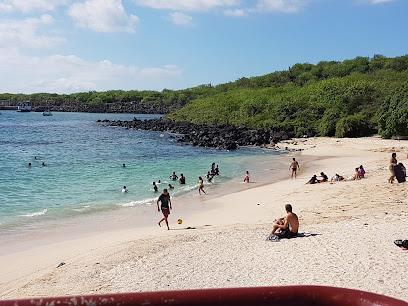
Mirador Cerro Tijeretas
Discover the stunning vistas of Mirador Cerro Tijeretas, a top tourist attraction in Isla de San Cristóbal, where nature and beauty converge for an unforgettable experience.
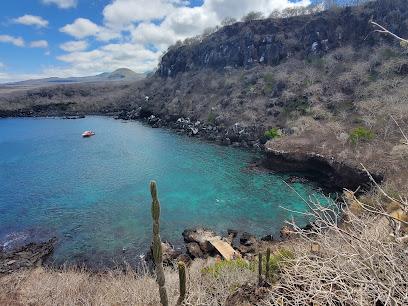
Malecón San Cristobal
Experience the breathtaking beauty and vibrant culture at Malecón San Cristobal, the heart of Puerto Baquerizo Moreno in the Galápagos Islands.
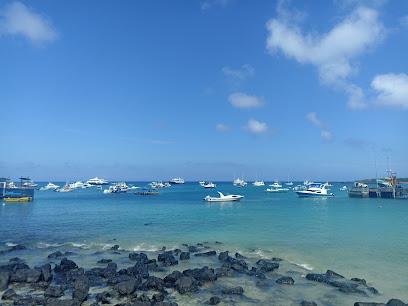
Point Carola Beach
Discover the tranquil beauty of Point Carola Beach, a coastal paradise in Ecuador perfect for relaxation, adventure, and local culture.
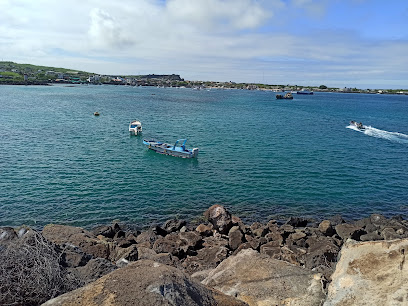
Playa de Oro
Experience the stunning beauty and adventure of Playa de Oro, a gem in Puerto Baquerizo Moreno, Galápagos Islands.
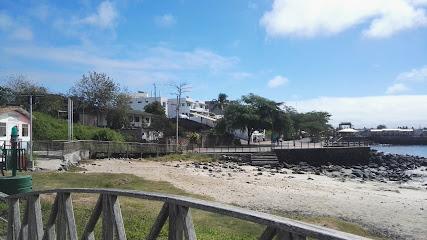
Playa Baquerizo
Discover the serene beauty of Playa Baquerizo, a hidden beach gem in Puerto Baquerizo Moreno, Ecuador, perfect for relaxation and exploration.

Acantilado La Loberia
Discover the enchanting wildlife and stunning coastal views of Acantilado La Loberia in the Galápagos Islands, a paradise for nature lovers and adventurers.
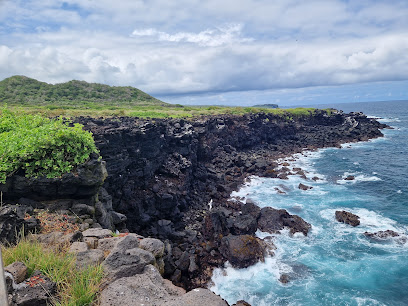
El Mirador de Los Tuneles
Experience breathtaking views and rich wildlife at El Mirador de Los Tuneles, a stunning attraction in the heart of the Galápagos Islands.
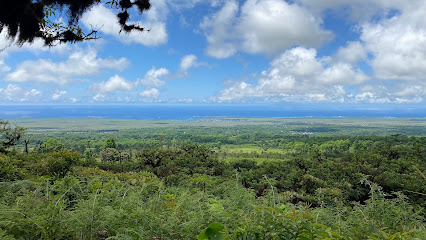
Punta Pitt
Discover the breathtaking landscapes and unique wildlife of San Cristobal Island in the Galapagos, a must-visit destination for every nature lover.
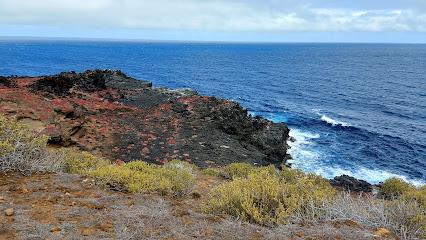
Playa Tijeretas
Explore the tranquil beauty of Playa Tijeretas, a hidden gem in the Galapagos Islands, renowned for its stunning scenery and vibrant marine life.
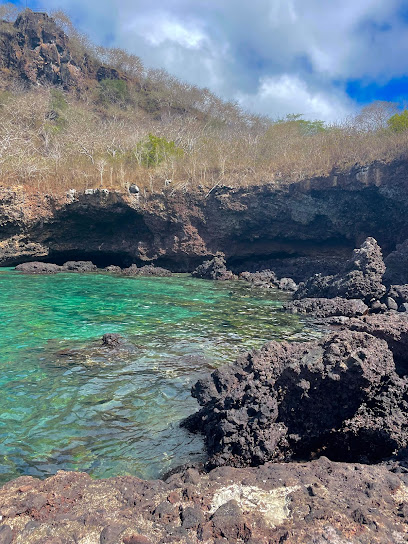
Dona Pilo
Discover the lively atmosphere of Dona Pilo in Puerto Baquerizo Moreno, where local flavors meet vibrant nightlife for an unforgettable experience.
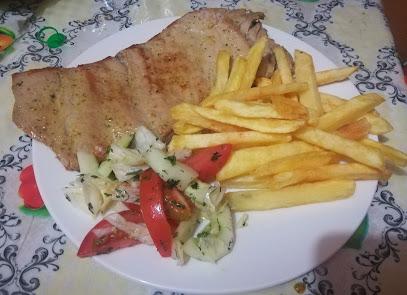
Cerro Brujo
Explore the breathtaking beauty of Cerro Brujo, a mountain peak in Ecuador that offers stunning views, rich biodiversity, and unforgettable hiking experiences.
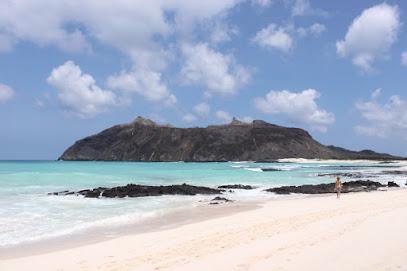
KINGGALASEA
Discover breathtaking landscapes and rich cultural experiences with KINGGALASEA, the premier sightseeing tour agency for unforgettable adventures.

Playa El Manglecito
Experience the untouched beauty of Playa El Manglecito, a tranquil beach and nature preserve on San Cristóbal Island, Ecuador.
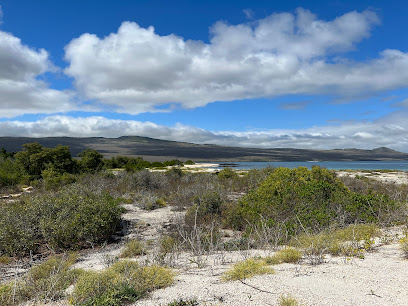
Essential places to dine
El Descanso Marinero
Experience fresh seafood and stunning ocean views at El Descanso Marinero in Puerto Baquerizo Moreno.
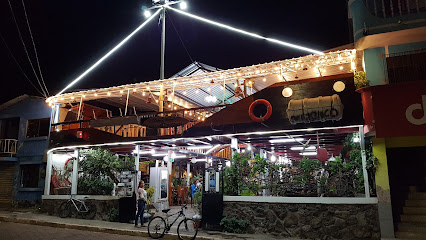
Giuseppe's
Experience authentic Italian cuisine at Giuseppe's in Puerto Baquerizo Moreno – where every dish tells a story.
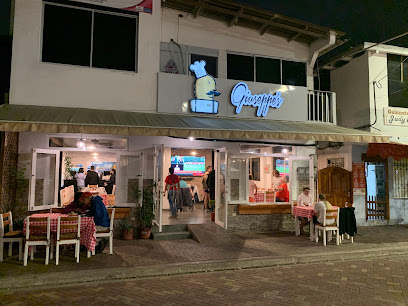
Midori Sushi Pub
Experience exquisite sushi and local seafood at Midori Sushi Pub in Puerto Baquerizo Moreno - where culinary excellence meets island charm.
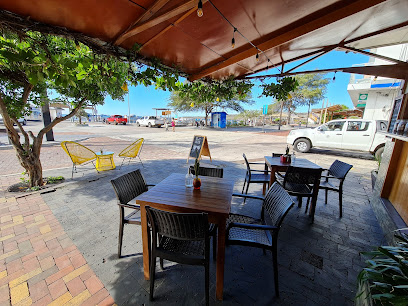
Muyu Galápagos
Discover authentic Ecuadorian flavors at Muyu Galápagos in Puerto Baquerizo Moreno - where every dish tells a story.
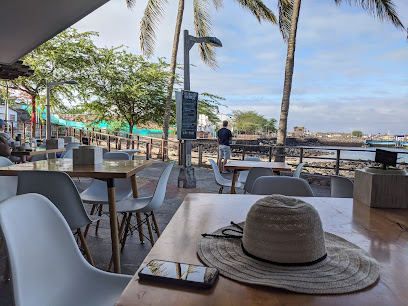
Galapagos Dreams
Experience authentic Ecuadorian flavors at Galapagos Dreams in Puerto Baquerizo Moreno, where fresh ingredients meet traditional recipes.

The Pier Restaurant & Cevicheria
Experience exquisite seafood dining at The Pier Restaurant & Cevicheria in Puerto Baquerizo Moreno—where freshness meets flavor by the sea.
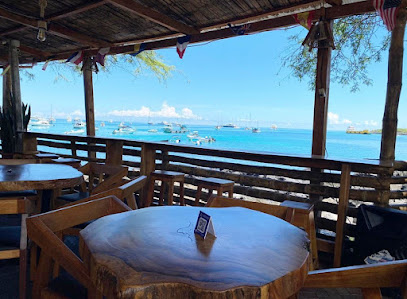
INTI GARDEN
Experience authentic Ecuadorian flavors at INTI GARDEN in Puerto Baquerizo Moreno, where fresh ingredients meet culinary excellence.
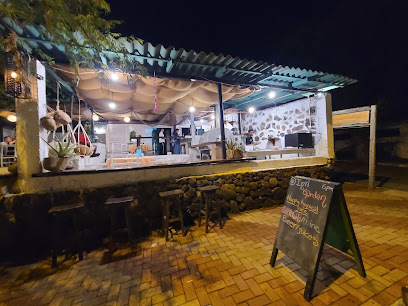
Iguana Rock
Discover exceptional grilled dishes at Iguana Rock in Puerto Baquerizo Moreno – where local flavors meet vibrant dining.
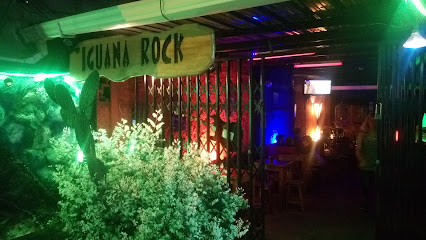
D'L COCO
Experience the vibrant flavors of Ecuadorian cuisine at D'L COCO in Puerto Baquerizo Moreno – a must-visit restaurant for every traveler.
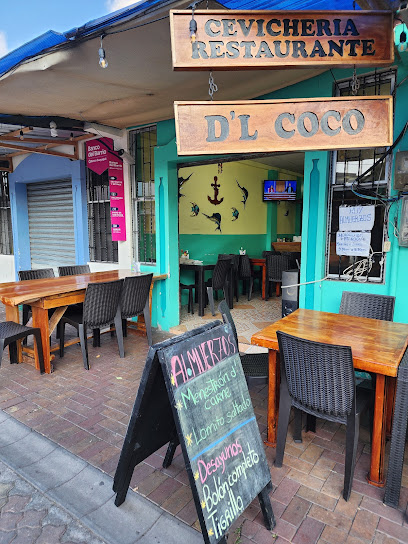
El Sabor Costeño
Experience authentic coastal cuisine at El Sabor Costeño in Puerto Baquerizo Moreno - a culinary journey through Ecuador's rich flavors.
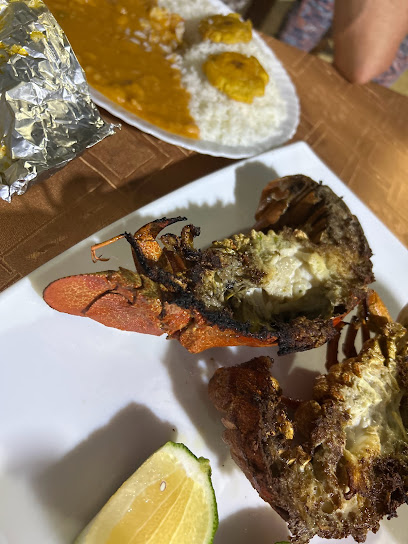
Mockingbird
Discover the flavors of Ecuador at Mockingbird – a vibrant restaurant offering fresh seafood & traditional dishes in Puerto Baquerizo Moreno.
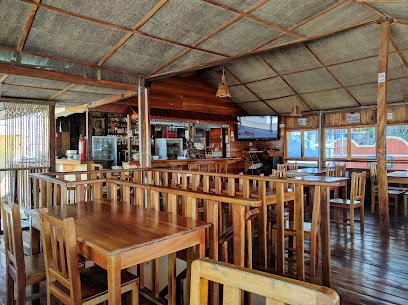
The Seafood House
Discover fresh flavors and delightful seafood dishes at The Seafood House in Puerto Baquerizo Moreno - A culinary gem in Galapagos.
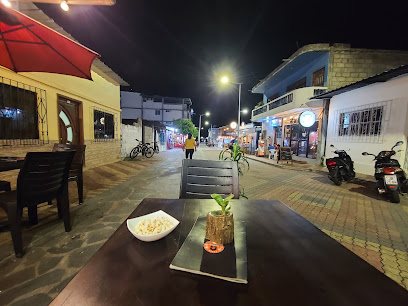
Cabaña Grande
Experience authentic Ecuadorian cuisine at Cabaña Grande in Puerto Baquerizo Moreno, where traditional flavors meet stunning views.

Fer's Grill House
Experience exquisite grilled flavors at Fer's Grill House in Puerto Baquerizo Moreno, where every meal is a celebration of local ingredients and culinary artistry.
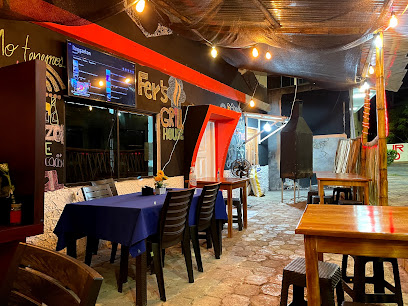
Nativo Bar & Cafe
Discover Nativo Bar & Cafe: An artistic bar and cafe in Puerto Baquerizo Moreno offering delicious food and drinks amidst vibrant local culture.
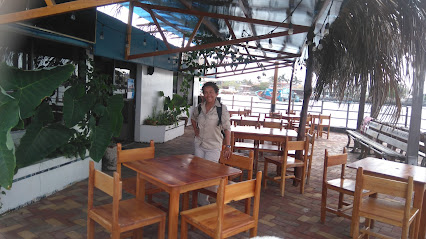
Markets, malls and hidden boutiques
Wreck Bay Diving Center
Discover the underwater wonders of the Galápagos Islands at Wreck Bay Diving Center, a premier dive shop for adventurers of all levels.
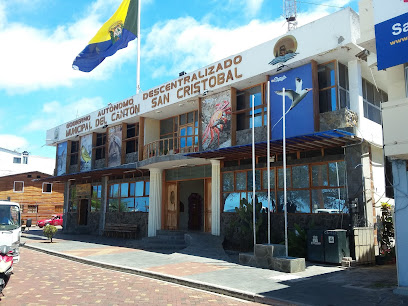
Mercado Municipal San Cristobal
Explore the vibrant Mercado Municipal San Cristobal, a cultural and culinary hotspot in the heart of Puerto Baquerizo Moreno.
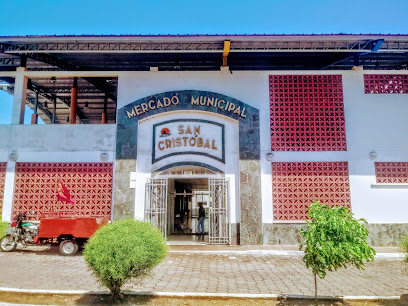
Foods & Healthy Market
Discover the freshest local produce and healthy options at Foods & Healthy Market in Puerto Baquerizo Moreno, a must-visit for every traveler.
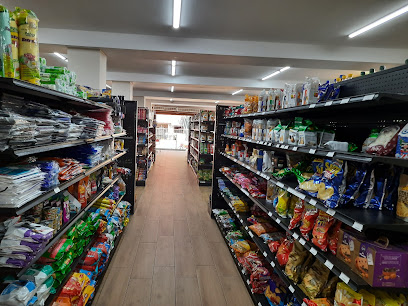
Mercado Central
Discover the vibrant Mercado Central in Puerto Baquerizo Moreno, where local culture, fresh produce, and unique crafts await every tourist.
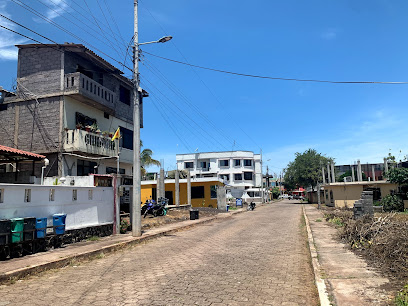
Footwear Willy
Explore Footwear Willy in Puerto Baquerizo Moreno for stylish boots and beachwear that enhance your Galapagos adventure.
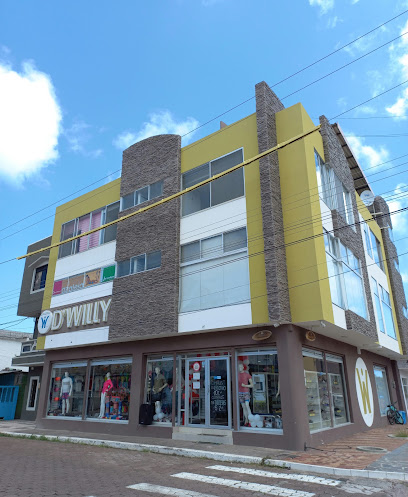
Mega Market Romero
Explore Mega Market Romero in Puerto Baquerizo Moreno for an authentic taste of Ecuadorian culture and a wide selection of local goods.
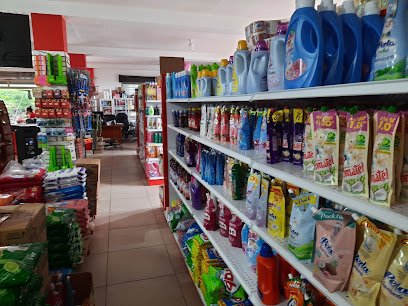
Multibebidas J.A
Explore the vibrant selections at Multibebidas J.A, the top supermarket in Puerto Baquerizo Moreno, for all your travel essentials and local snacks.
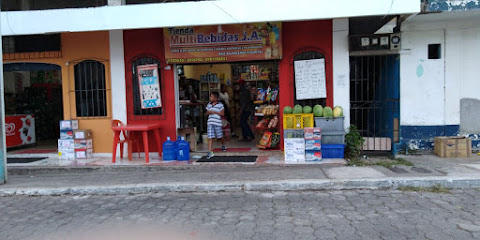
Super Market los Andes Galapagos San Cristobal
Explore the vibrant Super Market los Andes in San Cristobal for unique clothing, souvenirs, and a taste of local culture.

Super Market Galamaxi
Discover the vibrant shopping experience at Super Market Galamaxi, where local culture meets convenience in Puerto Baquerizo Moreno.
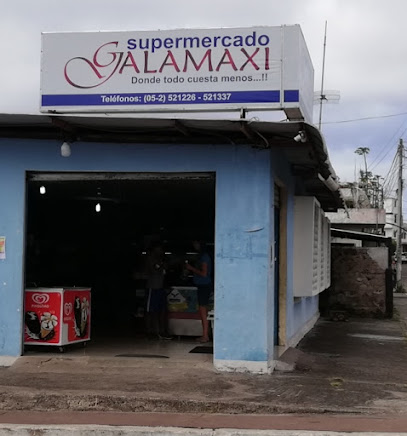
Minimarket Panchito
Explore Minimarket Panchito in Puerto Baquerizo Moreno for an authentic taste of Ecuadorian life with fresh produce and local delicacies.
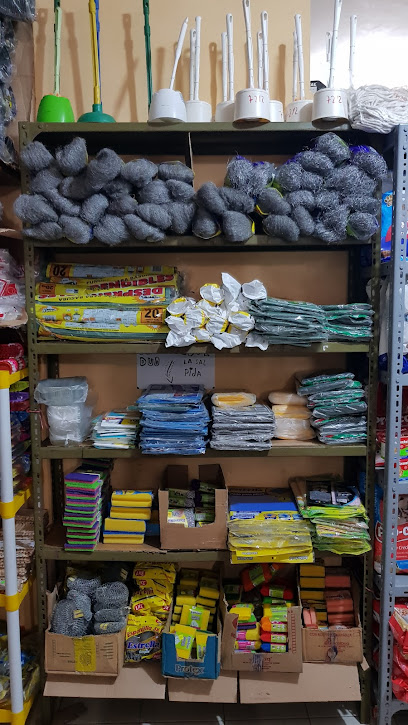
Green Island
Discover Green Island, a delightful cafeteria and organic shop in San Cristobal, offering fresh local flavors and a serene atmosphere for all travelers.

COMISARIATO GALAMARKET
Discover local and international flavors at Comisariato Galamarket, Puerto Baquerizo Moreno's go-to supermarket for all your shopping needs.

HadaSoft - Electronic Store
Discover the latest electronics and gadgets at HadaSoft, the premier tech store in Puerto Baquerizo Moreno, Ecuador.
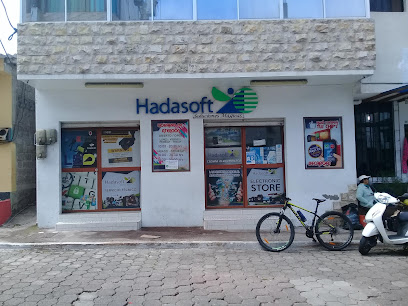
CEL EVOLUTION
Explore CEL EVOLUTION, a vibrant shopping mall in Española, Puerto Baquerizo Moreno, offering a unique blend of local and international shopping experiences.
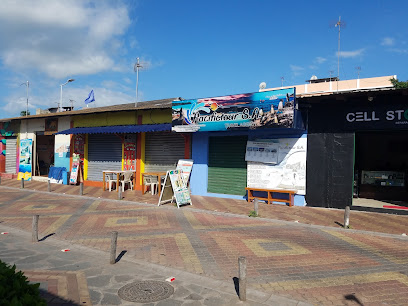
Mini Market Jazmin
Explore local flavors and essentials at Mini Market Jazmin, a charming grocery store in Puerto Baquerizo Moreno.
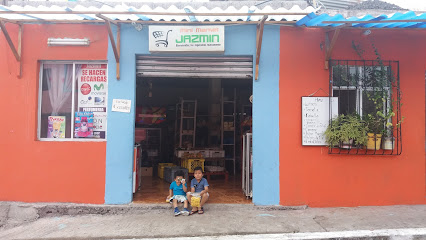
Essential bars & hidden hideouts
Cafe San Cristobal
Discover the vibrant flavors of Ecuador at Café San Cristobal, a charming bar and restaurant in Puerto Baquerizo Moreno, perfect for tourists seeking local cuisine.
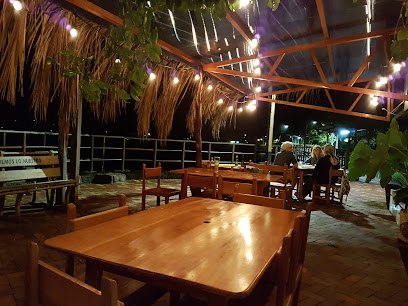
El Descanso Marinero
Experience the best of Galápagos seafood at El Descanso Marinero, where fresh flavors meet stunning ocean views in Puerto Baquerizo Moreno.
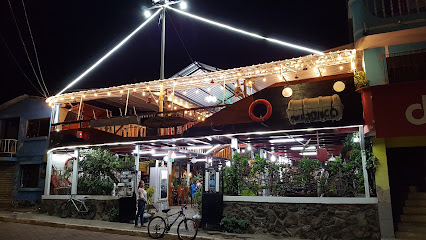
Cri's Burgers
Experience the best of Puerto Baquerizo Moreno at Cri's Burgers, where delicious flavors and stunning ocean views await every visitor.

Muyu Galápagos
Discover the authentic taste of Ecuador at Muyu Galápagos, where every dish is a celebration of local flavors and culinary traditions.

El Cangrejo Loco
Experience the best of Galapagos cuisine at El Cangrejo Loco, where fresh seafood meets breathtaking ocean views in Puerto Baquerizo Moreno.
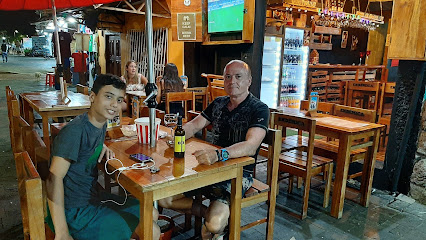
The Pier Restaurant & Cevicheria
Experience the ultimate beachfront dining at The Pier Restaurant & Cevicheria, where fresh ceviche and local seafood meet stunning ocean views in Puerto Baquerizo Moreno.

POST OFFICE FOOD & BEER
Experience the vibrant flavors of the Galapagos at POST OFFICE FOOD & BEER, where local cuisine meets a lively bar atmosphere.
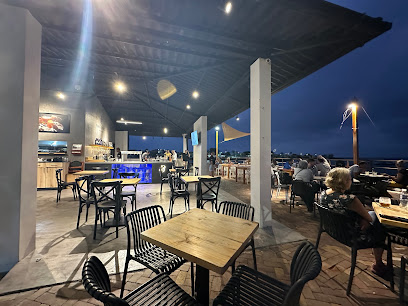
Iguana Rock
Experience the vibrant flavors of the Galapagos at Iguana Rock, where fresh grilled delights meet a lively atmosphere in Puerto Baquerizo Moreno.
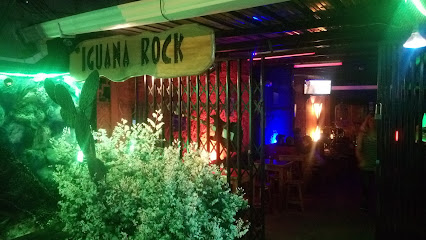
Endémica
Experience the essence of the Galapagos at Endémica Brewpub, where local craft beers and a welcoming atmosphere await you.
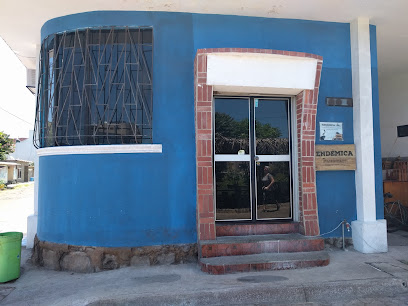
Mockingbird
Experience the vibrant flavors of Ecuador at Mockingbird, a beloved restaurant in Puerto Baquerizo Moreno, perfect for food lovers.
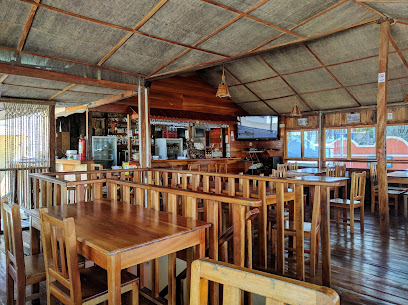
El Barquero
Experience the vibrant nightlife of Puerto Baquerizo Moreno at El Barquero, where local flavors and lively atmosphere create unforgettable memories.

Nativo Bar & Cafe
Experience the vibrant flavors and artistic atmosphere of Nativo Bar & Cafe in Puerto Baquerizo Moreno, a perfect blend of relaxation and local culture.
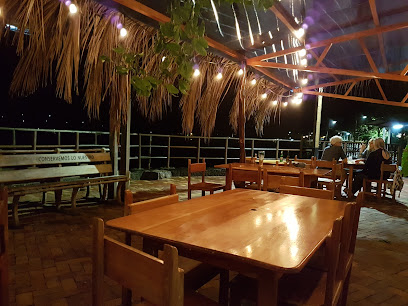
CORMOBAR
Discover the exquisite flavors of Ecuador at CORMOBAR, a top-rated restaurant in Puerto Baquerizo Moreno, perfect for culinary enthusiasts and travelers.

GASTROBAR DEL MAR
Discover the flavors of the Galapagos at Gastrobar Del Mar, a vibrant restaurant in Puerto Baquerizo Moreno, known for fresh local ingredients and stunning views.
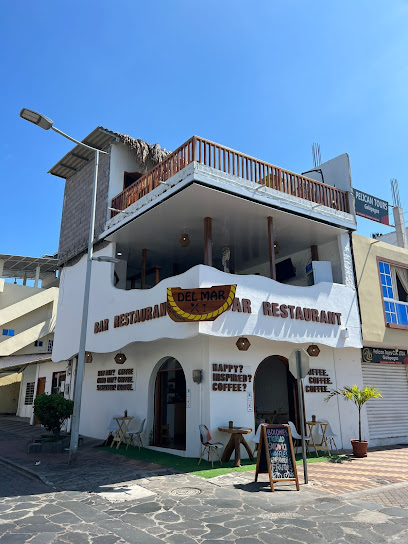
MarByg
Discover the vibrant karaoke scene at MarByg in Puerto Baquerizo Moreno, where every night is a celebration of music and camaraderie.

Local Phrases
-
- HelloHola
[oh-lah] - GoodbyeAdiós
[ah-dee-ohs] - YesSí
[see] - NoNo
[noh] - Please/You're welcomePor favor/De nada
[por fah-vor/deh nah-dah] - Thank youGracias
[grah-see-ahs] - Excuse me/SorryDisculpe/Perdón
[dees-kool-peh/pehr-dohn] - How are you?¿Cómo estás?
[koh-moh ehs-tahs] - Fine. And you?Bien. ¿Y tú?
[byen. ee too] - Do you speak English?¿Hablas inglés?
[ah-blahs een-glays] - I don't understandNo entiendo
[noh ehn-tyen-doh]
- HelloHola
-
- I'd like to see the menu, pleaseMe gustaría ver el menú, por favor
[meh goos-tah-ree-ah behr ehl meh-noo, por fah-vor] - I don't eat meatNo como carne
[noh koh-moh kahr-neh] - Cheers!¡Salud!
[sah-lood] - I would like to pay, pleaseMe gustaría pagar, por favor
[meh goos-tah-ree-ah pah-gahr, por fah-vor]
- I'd like to see the menu, pleaseMe gustaría ver el menú, por favor
-
- Help!¡Ayuda!
[ah-yoo-dah] - Go away!¡Vete!
[veh-teh] - Call the Police!¡Llama a la policía!
[yah-mah ah lah poh-lee-see-ah] - Call a doctor!¡Llama a un doctor!
[yah-mah ah oon dohk-tohr] - I'm lostEstoy perdido
[ehs-toy pehr-dee-doh] - I'm illEstoy enfermo
[ehs-toy ehn-fehr-moh]
- Help!¡Ayuda!
-
- I'd like to buy...Me gustaría comprar...
[meh goos-tah-ree-ah kohm-prahr] - I'm just lookingSolo estoy mirando
[soh-loh ehs-toy mee-rahn-doh] - How much is it?¿Cuánto cuesta?
[kwan-toh kwehs-tah] - That's too expensiveEso es demasiado caro
[eh-soh ehs deh-mah-see-ah-doh kah-roh] - Can you lower the price?¿Puede bajar el precio?
[pweh-deh bah-hahr ehl pree-syoh]
- I'd like to buy...Me gustaría comprar...
-
- What time is it?¿Qué hora es?
[keh oh-rah ehs] - It's one o'clockEs la una
[ehs lah oo-nah] - Half past (10)Las diez y media
[lahs dyehs ee meh-dee-ah] - MorningMañana
[mah-nyah-nah] - AfternoonTarde
[tahr-deh] - EveningNoche
[noh-cheh] - YesterdayAyer
[ah-yehr] - TodayHoy
[oy] - TomorrowMañana
[mah-nyah-nah] - 1Uno
[oo-noh] - 2Dos
[dohs] - 3Tres
[trehs] - 4Cuatro
[kwah-troh] - 5Cinco
[seen-koh] - 6Seis
[says] - 7Siete
[syeh-teh] - 8Ocho
[oh-choh] - 9Nueve
[nweh-veh] - 10Diez
[dyehs]
- What time is it?¿Qué hora es?
-
- Where's a/the...?¿Dónde está...?
[dohn-deh ehs-tah] - What's the address?¿Cuál es la dirección?
[kwal ehs lah dee-rek-syon] - Can you show me (on the map)?¿Puedes mostrarme (en el mapa)?
[pweh-dehs mohs-trar-meh (ehn ehl mah-pah)] - When's the next (bus)?¿Cuándo es el próximo (autobús)?
[kwan-doh ehs ehl proh-see-moh (ow-toh-boos)] - A ticket (to ....)Un boleto (a ...)
[oon boh-leh-toh (ah ...)]
- Where's a/the...?¿Dónde está...?
History of Puerto Baquerizo Moreno
-
Before the arrival of Europeans, the Galápagos Islands, including the area now known as Puerto Baquerizo Moreno, were uninhabited by humans. Archaeological evidence suggests that the islands were occasionally visited by indigenous peoples from the South American mainland, possibly for fishing or other transient activities.
-
The Galápagos Islands were officially discovered in 1535 by Fray Tomás de Berlanga, the Bishop of Panama, when his ship drifted off course during a voyage to Peru. This discovery marked the beginning of European interest in the archipelago, though it would remain largely unexplored for centuries.
-
Throughout the 17th and 18th centuries, the Galápagos Islands, including the area of Puerto Baquerizo Moreno, became a haven for pirates and whalers. These seafarers used the islands as a base for resupplying and repairing their ships. The abundance of giant tortoises and other wildlife provided a ready source of food.
-
In 1832, Ecuador officially claimed the Galápagos Islands. This marked the beginning of permanent human settlement in the archipelago. General José de Villamil, an Ecuadorian officer, established the first colony on the islands with a group of convicts, artisans, and farmers.
-
In 1835, the HMS Beagle, with naturalist Charles Darwin aboard, arrived in the Galápagos Islands. Darwin's observations of the unique flora and fauna during his visit played a crucial role in the development of his theory of evolution by natural selection. Although Darwin's time in Puerto Baquerizo Moreno specifically was limited, his visit brought international attention to the islands.
-
Puerto Baquerizo Moreno was officially established as a town in the early 20th century. Named after Alfredo Baquerizo Moreno, an Ecuadorian president, the town developed as a key port and administrative center in the Galápagos archipelago.
-
During World War II, the United States established a military base on Baltra Island, which is part of the Galápagos archipelago. This base was crucial for defense operations in the Pacific. Puerto Baquerizo Moreno, due to its proximity, saw increased activity and development during this period.
-
In recent decades, Puerto Baquerizo Moreno has grown significantly, driven by tourism and conservation efforts. The town now hosts the Galápagos National Park headquarters and the Charles Darwin Research Station. These institutions play a vital role in preserving the unique ecosystems of the islands while promoting sustainable tourism.
-
Puerto Baquerizo Moreno boasts a rich cultural heritage with a blend of influences from mainland Ecuador and the unique environment of the Galápagos. The town celebrates various local festivals, including the annual Fiesta de San Cristóbal, which features traditional music, dance, and cuisine, reflecting the vibrant local culture.
Puerto Baquerizo Moreno Essentials
-
Puerto Baquerizo Moreno is located on San Cristóbal Island in the Galápagos archipelago. To get there, you will need to fly into either Quito or Guayaquil, the two main international gateways in Ecuador. From these cities, you can take a domestic flight to San Cristóbal Airport (SCY). The flight typically takes around 1.5 to 2 hours. Once you arrive at San Cristóbal Airport, Puerto Baquerizo Moreno is just a short taxi ride away.
-
Puerto Baquerizo Moreno is a small town, and many of its attractions are within walking distance. For longer trips, you can use taxis, which are readily available and relatively inexpensive. There are also water taxis that can take you to various points around the island. Renting a bicycle is another popular option for exploring the town and nearby areas at your own pace. Note that there is no public bus system within the town.
-
The official currency in Ecuador is the US Dollar (USD). Credit cards are accepted in most hotels, restaurants, and larger shops, but it is advisable to carry cash for smaller establishments and local markets. ATMs are available in Puerto Baquerizo Moreno, but it's a good idea to withdraw sufficient cash before arriving on the islands, as ATM availability can be limited.
-
Puerto Baquerizo Moreno is generally a safe destination for tourists. However, like any travel destination, it is wise to take standard precautions. Avoid carrying large amounts of cash and keep an eye on your belongings, especially in crowded areas. There are no specific high-crime areas targeting tourists, but it is always best to stay vigilant and aware of your surroundings. Avoid walking alone at night in unfamiliar areas.
-
In case of emergency, you can dial 911 for immediate assistance. The local police station and medical facilities are available in Puerto Baquerizo Moreno. It is recommended to have travel insurance that covers medical emergencies. For minor health issues, there are pharmacies in the town where you can purchase over-the-counter medications.
-
Fashion: Do wear comfortable and casual clothing suitable for a tropical climate. Avoid wearing flashy jewelry or expensive items. Religion: Do respect local customs and traditions, though the area is not particularly religious. Public Transport: Do use water taxis and regular taxis respectfully. Don't expect a robust public transport system within the town. Greetings: Do greet people with a smile and a friendly 'Hola.' Handshakes are common for more formal interactions. Eating & Drinking: Do try local seafood and traditional Ecuadorian dishes. Don't refuse hospitality, as it is considered impolite.
-
To experience Puerto Baquerizo Moreno like a local, visit the local markets where you can buy fresh produce and traditional goods. Engage with locals, as they are often friendly and willing to share stories about the town's history and culture. Don't miss visiting the Interpretation Center, which provides insight into the unique ecology and history of the Galápagos Islands. For a unique experience, take a walk along the Malecon and enjoy the sunset views over the ocean.
Trending Landmark in Puerto Baquerizo Moreno
-
Mirador Cerro Tijeretas
-
Malecón San Cristobal
-
Playa Lobería
-
El Descanso Marinero
-
Giuseppe's
-
Cri's Burgers
-
San Cristóbal Gianni Arismendy Environmental Interpretation Center
-
Midori Sushi Pub
-
Treehouse
-
Muyu Galápagos
-
Muelle Tijeretas
-
Arena Blanca
-
Hotel los Algarrobos
-
Wreck Bay Diving Center
-
Casa Playa Mann
Nearby Cities to Puerto Baquerizo Moreno
-
Things To Do in Puerto Ayora
-
Things To Do in Galapagos Islands
-
Things To Do in Salinas
-
Things To Do in Manta
-
Things To Do in Guayaquil
-
Things To Do in Piura
-
Things To Do in Cuenca
-
Things To Do in Loja
-
Things To Do in Mindo
-
Things To Do in Ambato
-
Things To Do in Quito
-
Things To Do in Chiclayo
-
Things To Do in Otavalo
-
Things To Do in Ibarra
-
Things To Do in Macas







